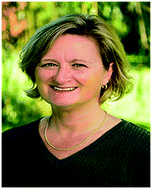Computer-aided solid form design
Abstract
This themed collection of CrystEngComm on computer-aided solid form design features recent work on the development, application, and experimental validation of algorithms for structure-based modeling and prediction. Combined with high performance computing and rich databases, computational chemistry, machine learning and knowledge-based approaches are making it increasingly possible to optimize molecular and material properties in computers before synthesis commences. Highlighted in this collection are some of the latest examples of cutting-edge science along three of the main thrust areas of computer-aided solid form design: crystal structure modeling and prediction, the experimental validation of predicted target structures, and the use of computer modeling for material property prediction.

- This article is part of the themed collection: Computer Aided Solid Form Design


 Please wait while we load your content...
Please wait while we load your content...